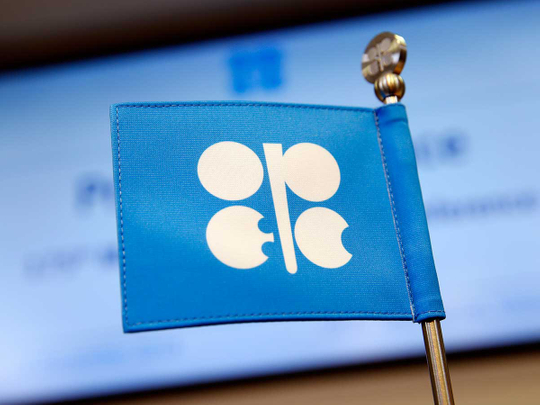
Abu Dhabi: Demand for oil will reach 110.6 million barrels per day (bpd) by 2040, as a global rise in the world’s population by nearly two billion will require more energy demand, said Opec in its latest World Oil Outlook.
The group issued the report on the third day of the Abu Dhabi Petroleum Exhibition and Conference (Adipec), with the report highlighting how oil would continue to be the world’s dominant energy resource within the next two decades even in the face of new energy sources such as renewables. The report said that more than $10 trillion in investments would be required by the oil industry to keep pace with demand by 2040.
“This year’s outlook is the 13th edition [of the report and] it has evolved in many ways since it was first launched in 2007. It’s key guiding principle has remained the same — to support sustainable market stability and to provide a platform from which to review, analyse and evaluate how oil and the energy scene will evolve,” said Mohammad Barkindo, Opec secretary-general.
“The issue of sustainable market stability as well as helping return balance to the market can also be seen clearly in the success of the declaration of cooperation between 24 Opec and non-Opec producers,” he added, lauding the work of Opec+.
Barkindo said that oil demand remained robust in the short, medium and long term, with an annual growth rate to be expected. “Oil and gas combined are still expected to make up more than 50 per cent of the energy mix by 2040 — to be precise [providing] about 53 per cent … Total oil demand is expected to reach 110.6 million bpd by 2040,” Barkindo said, pointing to Opec’s report, which said that at least 28 per cent of the world’s energy supplies would come from oil by 2040.
“From the mid-2020s, however, non-Opec sees a steady decline, thus Opec member countries will be required to meet the majority of the long term demand requirements. Demand for Opec liquids is projected to increase to 44.4 million bpd by 2040, up from 36.6 million bpd in 2018,” he added, highlighting the report’s prediction of a slowdown in oil production from non-Opec producers.
According to its outlook, US oil production is expected to peak by 2029, with its total liquids to peak during the mid-2020s. The report does, however, say that US production will see a rapid increase in the short-to-medium term.
“US tight oil is forecast to continue to expand at a strong pace, contributing just over 60 per cent of this medium-term non-Opec supply growth … US tight oil supply will expand sharply by 6.7 million bpd in the medium-term, before slowing thereafter, showing only modest increases.
“US tight oil supply is expected to peak at 17.4 million bpd in 2029 … US total liquids are forecast to peak at 22.8 million bpd in the mid-2020s. Total non-Opec supply is forecast to reach 72.6 million bpd in 2026, but gradually decline thereafter to a level of 66.4 million bpd by 2040,” the report added.
Oil in the medium term
Looking at oil demand in the medium term up to 2024, the report said that oil would see an annual average growth rate of one million bpd. “Global oil demand is expected to continue growing at relatively healthy rates in the medium-term reaching 104.8 million bpd by 2024. This represents an increase of 6.1 million bpd above the 2018 level.
“The average growth will be about 1 million bpd over the medium-term period, declining from a projected 1.1 million bpd in 2019 to 0.9 bpd in 2024,” the report added.
Opec also said the majority of the demand would come from non-OECD countries, with India and China being the top two.
“Incremental demand is forecast to come primarily from non-OECD countries (+6.6 million bpd). Annual average oil demand growth from non-OECD countries is projected to remain within a relatively narrow range of 1—1.2 million bpd over this period.”
$10 trillion investment
Stressing the need for investments, which the report put at $10 trillion, Suhail Al Mazrouei, UAE Minister of Energy and Industry, said a lot of these investments would come in the form of improving operations.
“The $10 trillion we would require is not only to bring those 10.6 million additional barrels to what we have today.
“We have to work harder as an industry to replace the reserves that we deplete, and it’s not cheap, it’s expensive year on year and it’s getting more expensive … Every year the world consumes 100 million barrels so in a year you need to replace or to bring a production as big as half of Saudi Arabia or Russia to just replace what we lose,” he added, pointing to the costs of not only maintaining production, but increased production.
“Challenges will happen as the reservoirs get aged, so it’s not as easy to say that we will get to 10.4 (additional) million bpd or 110.6 million bpd. That takes great efforts from this industry and it comes at a cost, we need efficiency improvements [and] we need resilience,” he said.










